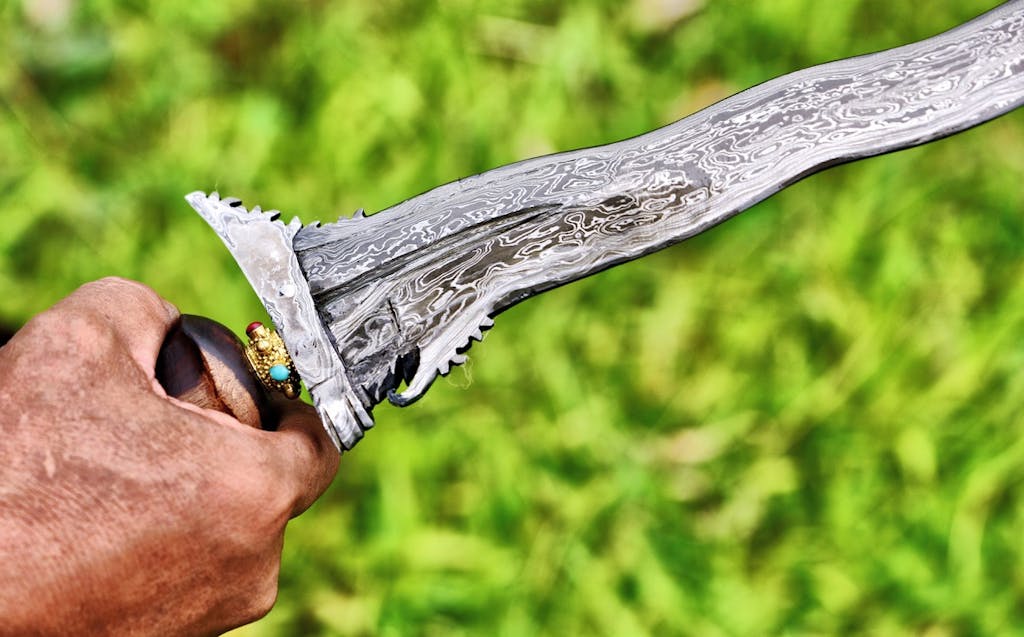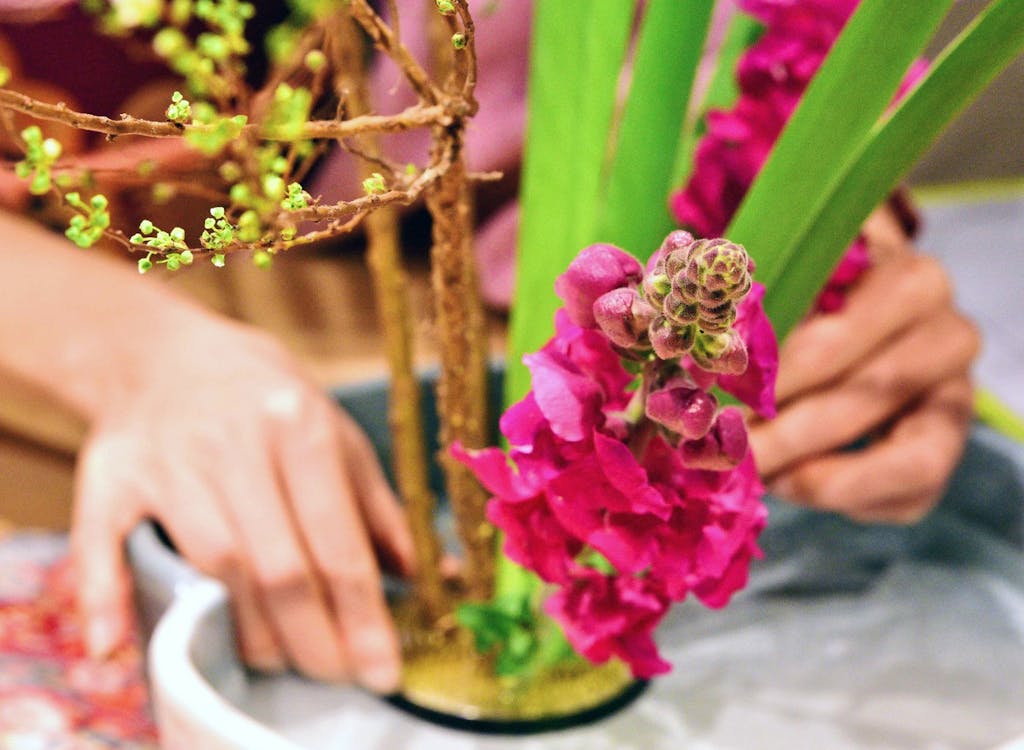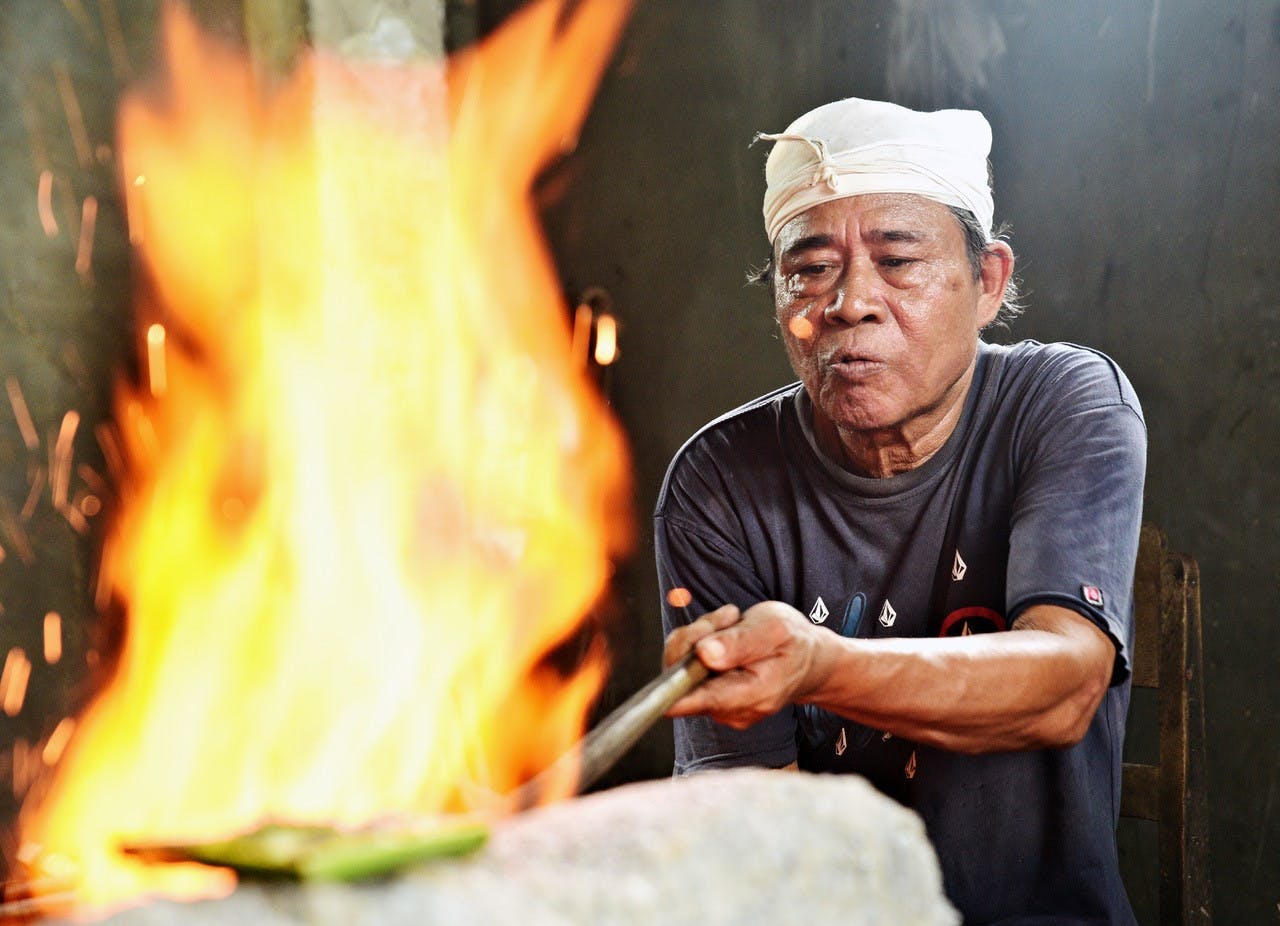Five Makers Continuing to Bring Traditional Techniques to Asian Contemporary Art
Are they the last of a fading generation? Using classic tools and centuries-old methods, some of Asia’s artisans are trying to safeguard traditional crafts which once were treasured but are now gradually vanishing in the face of modernity. From Japan to Singapore, their skills are perfectly honed and incredibly diverse: they hand-carve instruments, warp weapons, design decorations, sculpt statues and carefully arrange flowers — all as part of the Asian contemporary art scene. To promote their craft, many of these artisans welcome curious travelers into their workshops to demonstrate their ancient skills. So step inside and meet five modern Asian makers who continue to use traditional techniques.
An old tune in Bangkok
Sitting cross-legged in her wooden home in an ancient neighborhood of Bangkok, 60-year-old Nittaya Ruchiamsin is wielding a steel knife with authority. Using her feet to grip the base of a piece of bamboo wood, the Thai woman is meticulously carving a traditional Thai khlui flute. After 45 years of making these instruments, Mrs. Ruchiamsin’s hands are covered in scars.
“Isn’t there a safer way to do this?” I ask her through a translator. She pauses her work, looks at me over the rims of her glasses and replies: “Of course, but it wouldn’t be the same”. Mrs. Ruchiamsin is the fifth generation of a family that has been making bamboo flutes here in the Bangkok district of Thonburi for more than 100 years.
Her neighborhood used to be home to dozens of flute-making families. Now only three remain. Khlui flutes can be mass-produced in factories so cheaply that it’s very hard for these artisans to compete. The factory versions, however, cannot match the quality of those produced here in Baan Lao. It takes Mrs. Ruchiamsin between one and 10 days to make a Khlui, depending on the level of ornamentation she carves into its exterior. The flutes then sell for anywhere from $50 to $600 to musicians, collectors and museums.

Bali’s blade of the gods
Drenched with sweat as he sits next to a raging open fire, Empu Ketut Mudra sums up why his craft is dying out. “It is in the blood,” the 66-year-old artisan says, while rotating in the flames a piece of steel that will become a Balinese keris dagger. While many traditional skills are slowly disappearing across Asia due to younger generations taking on more modern occupations, Empu Ketut Mudra’s craft has an extra barrier to entry. For more than 500 years, traditional keris daggers have been made only by members of the Pande caste, who have the born right to produce them as part of Bali’s complicated caste system.
Although mass-produced versions are sold to tourists, to the locals the only true keris daggers are those handcrafted by Pande people. A snake-shaped blade with more than 1,000 years of history, keris daggers are commonly displayed during Balinese weddings and Hindu ceremonies. They are believed to provide protection from negative forces in the universe.
In his basic workshop in Kusamba in southeast Bali, Empu Ketut Mudra toils for two to five days to create one dagger, which then sells for between $50 and $300. He creates more than 30 different types of keris daggers, but declined to show me how he does it — “That is a Pande secret.”

Arranging Japanese beauty
The snapdragon flower moves just a fraction, sliding to its left. That is unacceptable for Kimiko Yamamoto, who repositions it not once, but twice. She is not satisfied until it remains exactly where she wants it, to the millimeter. For this 38-year-old Japanese native, precision is everything. Ikebana demands it.
She explains her fastidiousness, along with some of the finer points of ikebana Japanese flower arranging, as we sit in her home in Kyoto. The capital of Japan for more than 1,000 years up until 1868, when Tokyo took the title, Kyoto remains the artistic hub of the nation. More than 1,500 years after it was invented, ikebana is now struggling to remain relevant in this hyper-modern country with its focus on Asian contemporary art.
Mrs. Yamamoto teaches ikebana to travelers as a way of promoting this art form. By carefully placing flowers and branches within a vase or dish, ikebana artists aim to recreate the grandeur and balance of nature on a miniature scale. She tells me that, within their arrangement, they create “neutral” and “dynamic” spaces, representing open fields and dense forests, respectively. “It is a very delicate skill,” Mrs. Yamamato says. “I hope it lives on for many more generations.”

Creating good luck in Singapore
Even after 70 years, Chwee Lian’s passion hasn’t dimmed. That is how long this 88-year-old woman has been handcrafting Taoist idols here in Singapore. Since the 14th century, Mrs. Lian’s family have been involved in this trade, which they learned in Fujian Province in southern China, before moving to Singapore in 1896 to start a shop selling Taoist statues. Now Mrs. Lian’s business, called Say Tian Hng, is the only store of its kind in Singapore.
In a studio at this shop in the suburb of Tanjong Pagar, I watch Mrs. Lian paint a small statue of Guang Yin, the Taoist Goddess of Mercy. It is slow work that requires generous concentration and precision. The statues are hand carved on site, out of camphor wood imported from China. It is a family business, with several of Mrs. Lian’s relatives involved in the carving and painting process.
The completed statues range in price from $220 up to more than $2,000 for particularly large versions. These idols are believed to attract good fortune and repel evil spirits, and are displayed in temples or the homes of followers of the Taoist religion.
Illuminating Hoi An
An historic riverside settlement of cobblestone streets lined by graceful 18th-century shop houses, Hoi An is perhaps the most beautiful city in all of Southeast Asia and perfectly encapsulates the art of travel. Never does this Vietnamese city look more striking than once the sun slips from view and Hoi An becomes illuminated by the thousands of lanterns strung up along its streets.
Many of these lanterns are produced en masse by factories. Yet there are still some artisans who create them by hand, like 36-year-old resident of Hoi An, Thuy Nguyen. These lanterns have been traced back some 1,800 years to China. Whereas the Chinese made them from paper, when the Vietnamese began using them they wrapped their bamboo frames with silk.
Mrs. Nguyen specializes in high-end silk versions and also teaches tourists how to make them. First, she shapes the frame out of wood, then she cuts the silk to the specifications of the frame before gluing this material on in sections. A bulb is placed inside the frame and, just like that, a Vietnamese silk lantern is born.

